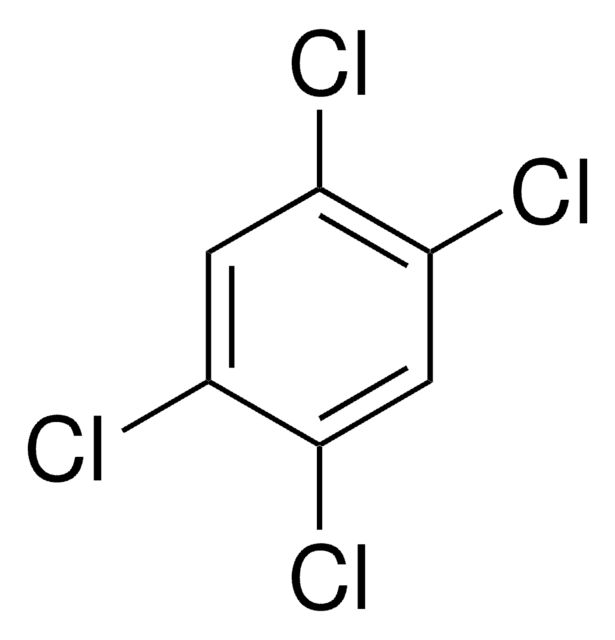07-5350
1,4-Dioxane
JIS special grade, ≥99.0%
Synonyme(s) :
Dioxane, Oxyde de diéthylène
About This Item
Produits recommandés
Qualité
JIS special grade
Densité de vapeur
3 (vs air)
Pression de vapeur
27 mmHg ( 20 °C)
40 mmHg ( 25 °C)
Pureté
≥99.0%
Forme
liquid
Température d'inflammation spontanée
356 °F
Limite d'explosivité
22 %
Disponibilité
available only in Japan
Indice de réfraction
n20/D 1.422 (lit.)
pH
6.0-8 (20 °C, 500 g/L)
Point d'ébullition
100-102 °C (lit.)
Pf
10-12 °C (lit.)
Densité
1.034 g/mL at 25 °C (lit.)
Chaîne SMILES
C1COCCO1
InChI
1S/C4H8O2/c1-2-6-4-3-5-1/h1-4H2
Clé InChI
RYHBNJHYFVUHQT-UHFFFAOYSA-N
Vous recherchez des produits similaires ? Visite Guide de comparaison des produits
Mention d'avertissement
Danger
Mentions de danger
Conseils de prudence
Classification des risques
Carc. 1B - Eye Irrit. 2 - Flam. Liq. 2 - STOT SE 3
Organes cibles
Respiratory system
Risques supp
Code de la classe de stockage
3 - Flammable liquids
Classe de danger pour l'eau (WGK)
WGK 3
Point d'éclair (°F)
53.6 °F
Point d'éclair (°C)
12 °C
Certificats d'analyse (COA)
Recherchez un Certificats d'analyse (COA) en saisissant le numéro de lot du produit. Les numéros de lot figurent sur l'étiquette du produit après les mots "Lot" ou "Batch".
Déjà en possession de ce produit ?
Retrouvez la documentation relative aux produits que vous avez récemment achetés dans la Bibliothèque de documents.
Notre équipe de scientifiques dispose d'une expérience dans tous les secteurs de la recherche, notamment en sciences de la vie, science des matériaux, synthèse chimique, chromatographie, analyse et dans de nombreux autres domaines..
Contacter notre Service technique







